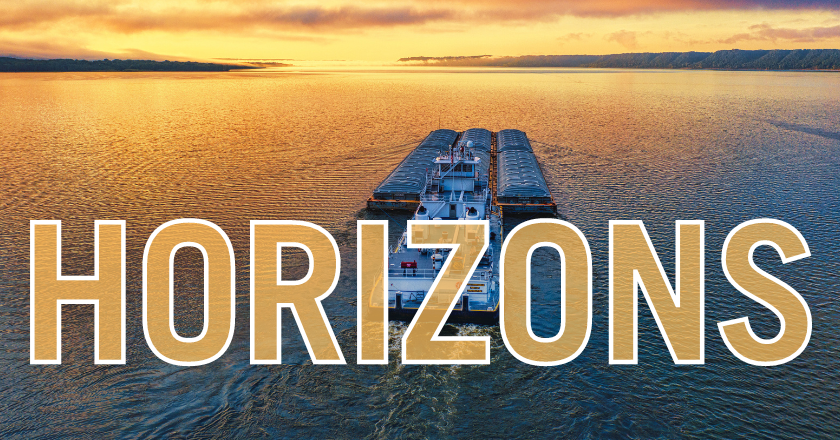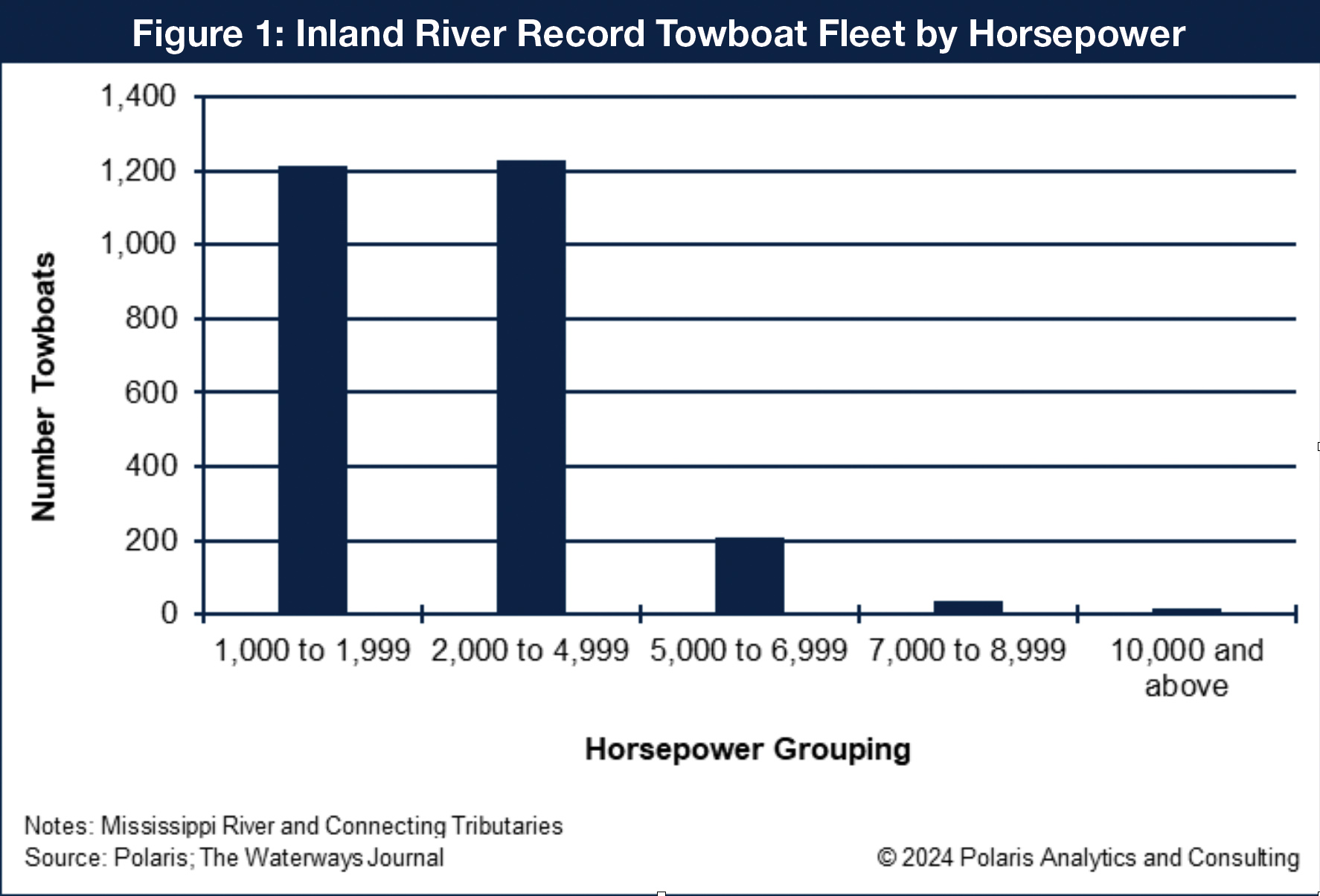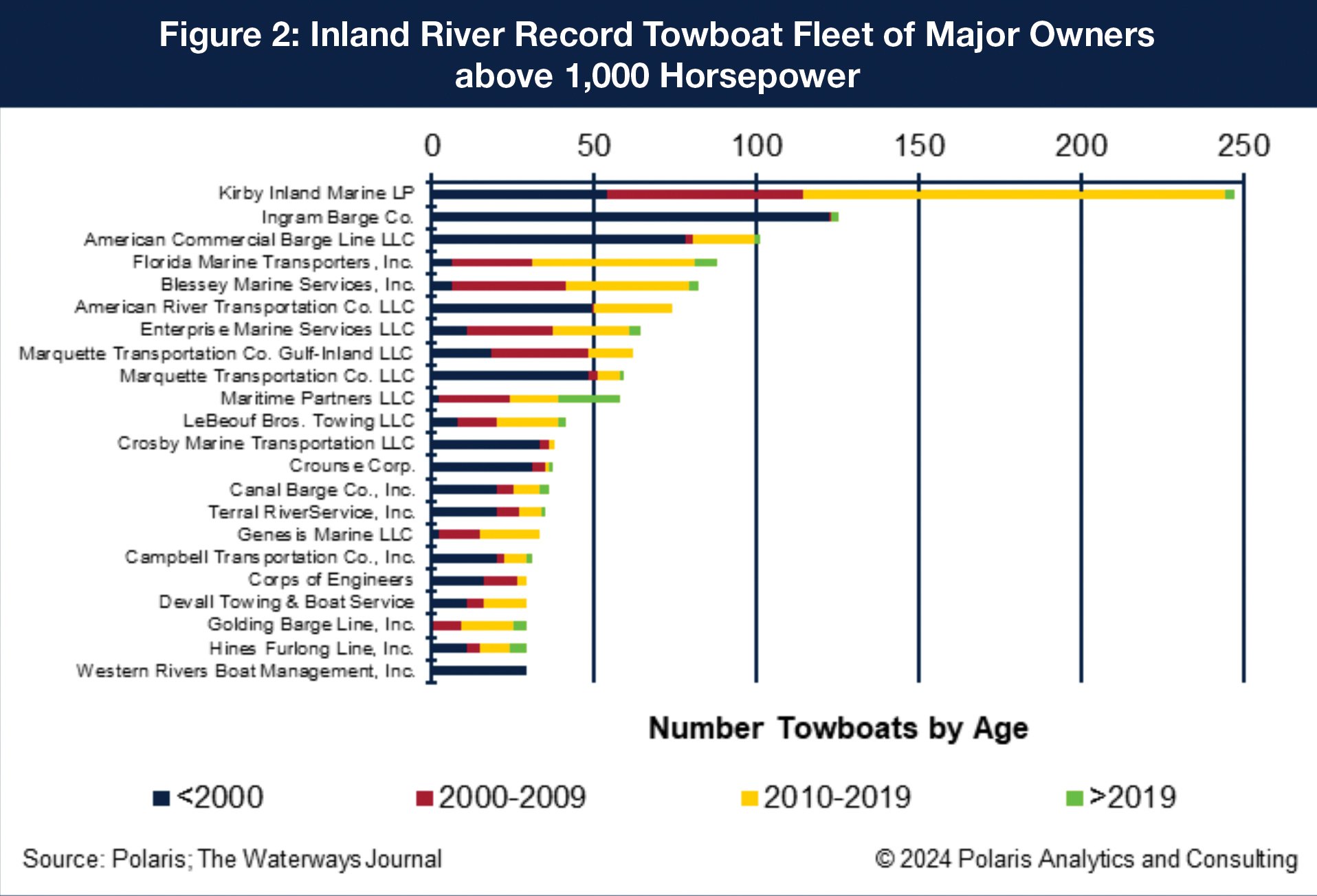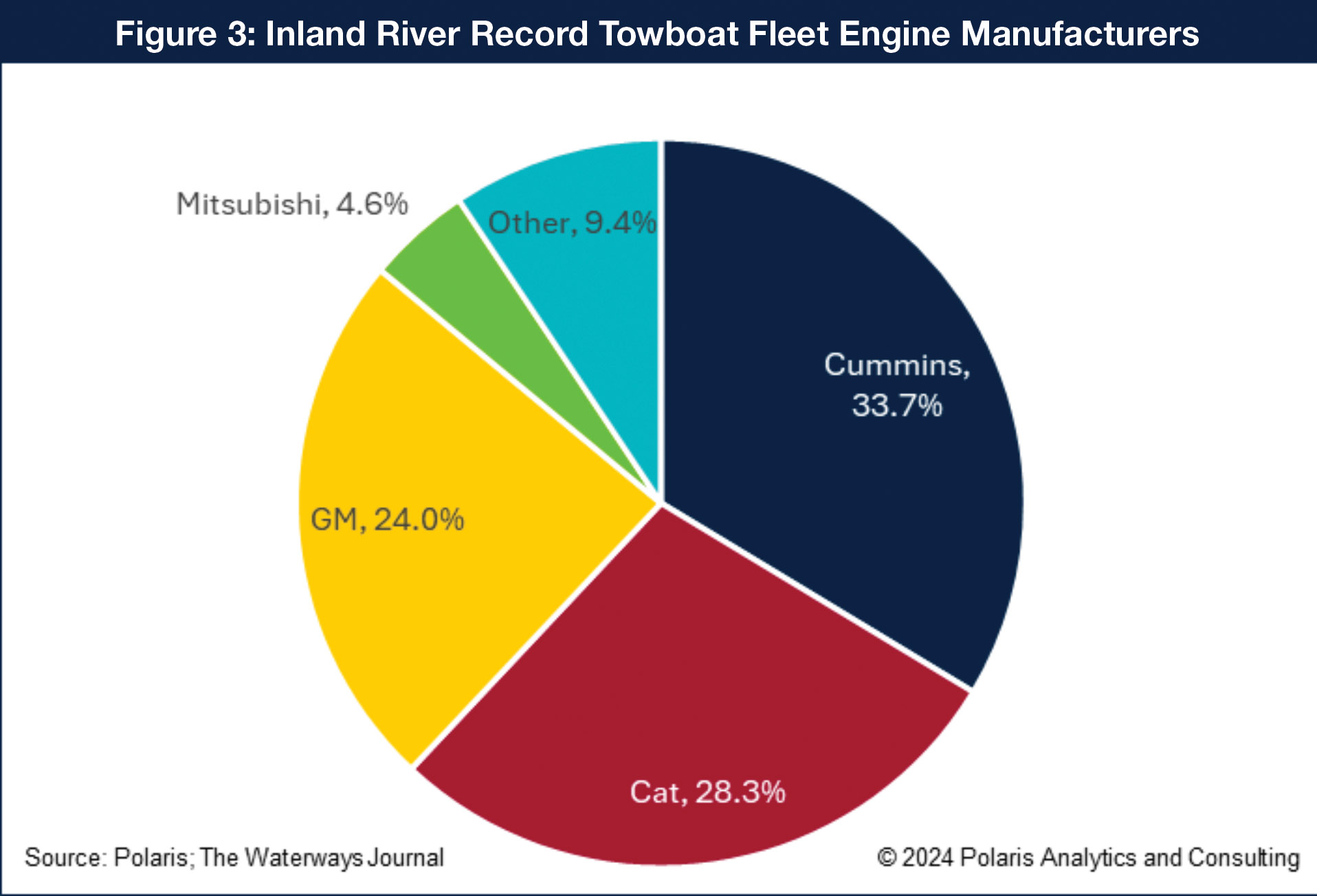By Ken Eriksen
Towboats are the workhorses of the inland river industry operating on the Mississippi River and its connecting tributaries. They come in all dimensions and horsepower capabilities for specific purposes. They keep barges marshaled and commodities moving from one place to another. They are the power in the water, pushing and keeping the economy flowing.

Powering the Economy
It takes a big fleet of towboats to keep the economy flowing: 3,761 of them, according to the Inland River Record of The Waterways Journal. The industry’s towboats keep watch over 22,356 barges, as reported in WJ’s Inland River Record Barge Fleet report, that are dependent on towboat power for loading or unloading, to be parked in a fleet, or configured in a tow for movement to another market position.
There are towboats that serve harbors, placing barges to and from berths and terminals. While these harbor towboats may not have big horsepower (less than 2,000), there are many of them, as many as three out of five towboats operating in the inland rivers. These harbor towboats are dotted up and down the river system, keeping within close geographic distances of their service areas. Their economic function is critically important for keeping the nearly one-half billion short tons of cargo moved to and from the nation’s inland river ports and terminals.
Towboats in the 2,000 hp. to 4,999 hp. range are dedicated to certain barge tow configurations such as a “six-pack” or “double” of tank barges on specific routes or river segments. This grouping includes about 1,200 towboats.
Larger towboats with greater horsepower capability serve mainline runs and are dedicated to a river segment and tow size. For example, the 5,000 hp. to 6,999 hp. grouping largely serves the dry hopper barge fleets of the locking rivers (above St. Louis on the Mississippi River or on the Ohio River). These towboats will be pushing 15-barge tows.
Then there are the towboats that have 7,000 hp. to more than 10,000 hp. that operate on the non-locking areas of the Lower Mississippi River, pushing tow sizes totaling 56 barges. As an example, Marquette Transportation Company recently shared a photo on Facebook of the mv. Ray A Eckstein pushing 56 empty barges upriver on the Lower Mississippi River.
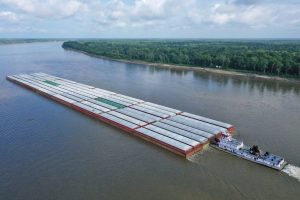
For perspective, a 56-barge tow would have seven barges across (or 245 feet across, presuming each barge has a 35-foot width) and eight barges long (or 1,600 feet long, presuming each barge is 200 feet long), plus the towboat that is nearly 200 feet long. The total length of that 56-barge tow would nearly be 1,800 feet! That is more than one-third of a mile. By comparison, the newest locks at the Panama Canal are 180 feet wide and 1,400 feet long.
For perspective, those 56 barges would have a surface area of nearly nine acres! If those 56 barges were loaded, they could be hauling upwards of 100,000 short tons of cargo, more than enough to fill one and a half Panamax vessels or a small Capesize vessel in the U.S. Center Gulf. If the cargo was soybeans, that tow would represent nearly 64,600 acres of farmland. Towboats power the economy!
The number of towboats by horsepower is shown in Figure 1.
Broad and Diverse Ownership of Towboats
Towboats marshaling and pushing barges on the inland waterways have many owners, most of them independent barge operating companies. As an example, 22 different operating companies own nearly half of the inland towboats with 1,000 hp. or more, as shown in Figure 2. Kirby Inland Marine LP, the publicly traded transportation company out of Houston, owns the highest count of towboats, totaling nearly 250 on the system. They require a high number of towboats to push tank barges loaded with various liquid cargos, such as oil, gasoline, diesel, jet fuel, chemicals, asphalt, etc. Those cargoes are moved in dedicated tow sizes of up to six barges. Having fewer barges in a tow configuration requires more towboat capability.
The age of the towboats varies by owner. For example, Kirby has a more “balanced” age profile than that of a dry barge operator such as Ingram Barge Company, American Commercial Barge Line or American River Transport Company (yes, these barge lines also have tank barges, but their barge fleets mainly consist of dry barges). The number of towboats by owner and built by year are shown in Figure 2. Please note that the age represented is a little misleading in that is reflects the year the towboat hull was laid and does not reflect major overhauls, rebuilds or engine upgrades.
Towboat Operators, Start Your Engines
The majority of towboats are powered, essentially, by one of three major engine manufacturers: Cummins, Caterpillar or General Motors. Together, these three manufacturers represent 86 percent of the number of engines powering towboats on the inland river system. A fourth company, Mitsubishi, has 4.6 percent of the market share. Some towboat owners might vector to one manufacturer over another. Some manufacturers may have more engines on the lower horsepower spectrum, while others focus more on the higher end of the spectrum. The distribution of engine manufacturers with engines in towboats on the inland river system is shown in Figure 3.
The marvel of the engines is incredible for the work they do (consider the 56-barge tow discussed earlier). Many of the engines run non-stop, 24 hours each day. Some may idle longer than others, such as harbor towboats, while mainline towboats are constantly underway, idling only to reconfigure their tows.
It takes a lot of fuel, labor, insurance and maintenance to keep the fleet of towboats operating. Despite the higher costs, especially the fluctuation in the price of fuel, these towboats are the most efficient at moving cargoes as compared to rail and truck. According to the National Waterway Foundation, for each gallon of fuel, a barge can travel 675 ton-miles, which is 1.4 times farther than rail and 4.5 times greater than truck. Moreover, while a barge will emit 15.1 tons of CO2 per million ton-miles, rail releases 43 percent more and trucks spew 832 percent more than barges.
The power of towboats not only keeps the economy flowing, but they also do it most efficiently and most cleanly.
The Inland River Record of towboats can be ordered online at www.waterwaysjournal.net.


